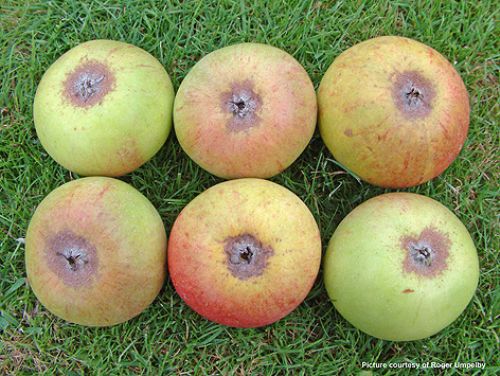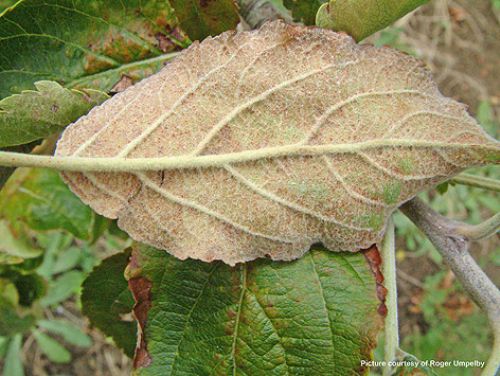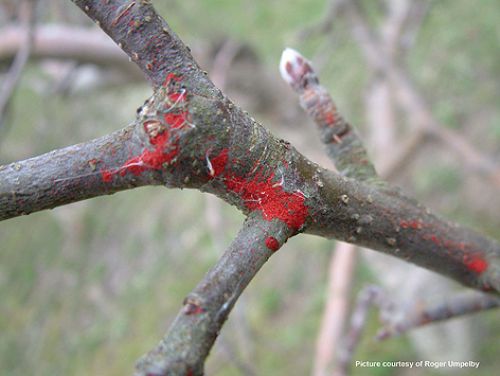
Apple growers have a new option to tackle the increasing problem of Flat Scarlet Mite, with a SOLA for Agrimec use in the crop ready for the coming season. The mite has become a significant pest over recent years, with independent fruit agronomist, Roger Umpelby, reporting over 30% of apple orchards in the West Midlands experiencing pest attacks at levels high enough to damage fruit.
’Large numbers of mites feeding on foliage and developing fruits have a severe adverse effect on tree health and fruit quality,’ he said. ’Leaves develop necrotic areas at the base, shrivel and can drop prematurely, whilst mites feeding around the eye of the fruit can cause russet damage.’
Numbers of Flat Scarlet Mite (Cenopalpus pulcher) have been increasing in apple orchards over recent years, with very damaging populations recorded in a number of orchards in Eastern, South Eastern and Western fruit growing areas of the UK.
East Malling Research entomologist, Jerry Cross, advises that Agrimec should be applied as soon as possible after the end of petal fall when Flat Scarlet Mite is identified as active in the crop. ’At this stage the females that have over-wintered in the bark invade the foliage and start feeding and egg laying. Controlling these females is very important, as it both prevents damage and population build-up. A second later application will deal with any young mites hatching from eggs laid before the first treatment.’

The Agrimec SOLA, sought by the HDC, allows for up to two applications a year, at a rate of 0.75 l/ha. The time scale of application, from May to July should cover most crops.
Prof. Cross warns growers to be vigilant for the first signs of leaf speckling damage, paying close attention to outer rosette leaves of the blossom clusters and the lower surface of the rosette leaves, especially near the main vein.
Trials at East Malling Research have shown virtual complete control of motile Flat Scarlet Mite within five days of Agrimec application in mid/late-May. By mid-June, the single Agrimec spray was still delivering 70% control of motile mites and, by controlling the adult stages, a resulting 80% reduction in egg numbers.

Preserving predatory bugs
New studies in Holland have shown that Agrimec application at the approved post-flowering timing has virtually no effect on beneficial earwigs and predatory mites.
The trials at the Wageningen research institute showed earwigs remained just as active after Agrimec treatment as those trees treated with water, compared to indoxacarb treatments that resulted in high numbers of moribund or dead insects and little or no normal activity even after 30 days post treatment.
Michael Tait of Syngenta reports that historically growers may have considered earwigs a pest for burrowing into apples, but in fact they only extend existing holes and cause virtually no damage to sound fruit. ’We now know that they have a beneficial effect as a predatory species and should be encouraged in fruit crops. These trials show the important role of Agrimec as part of Integrated Crop Management programmes in orchards,’ he added.
